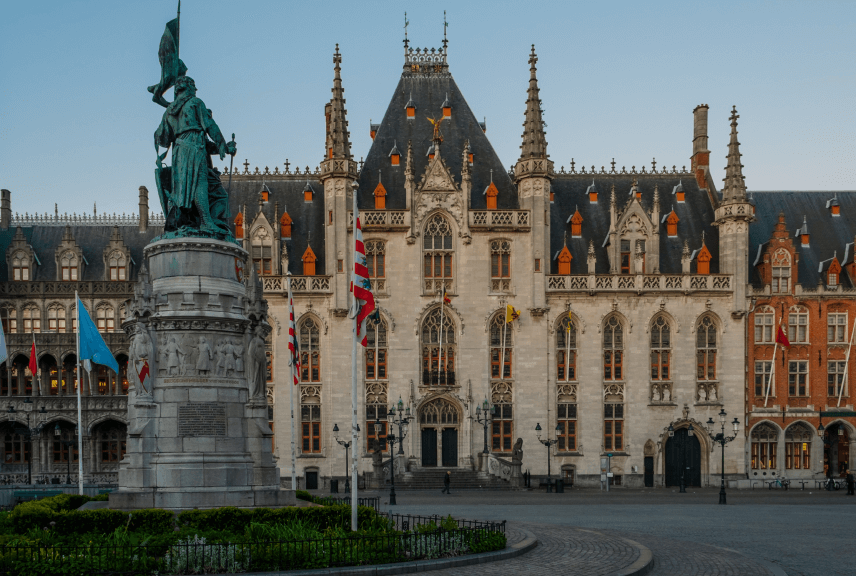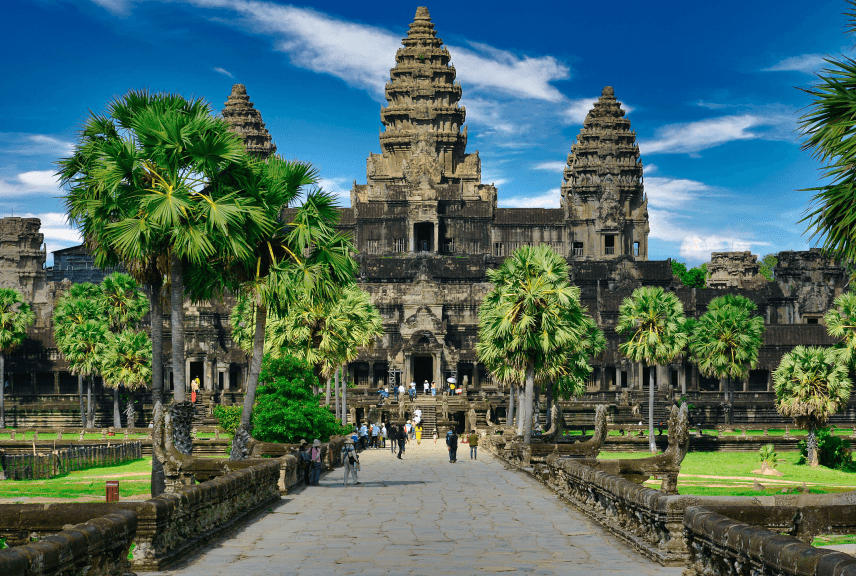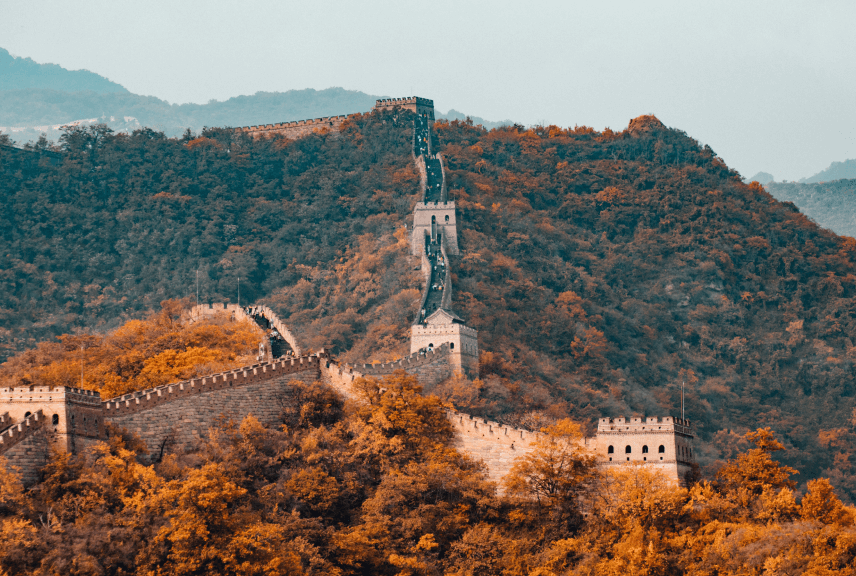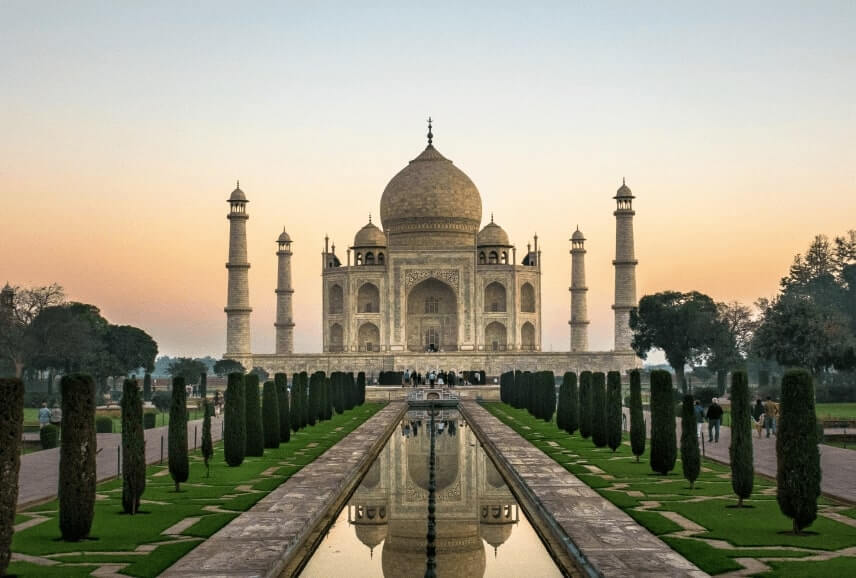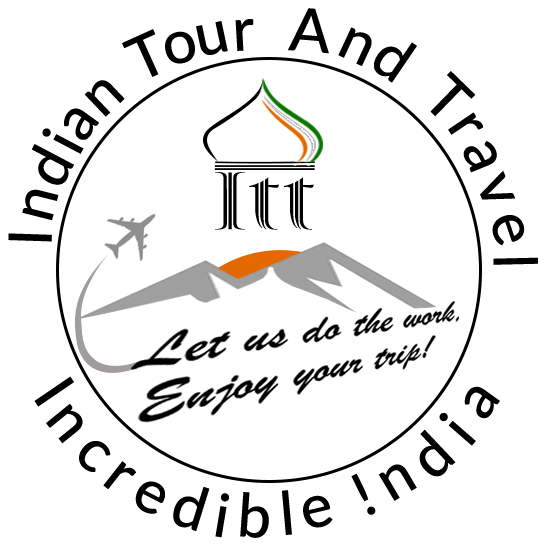Religion in India
India has been witnessed as the land of diverse religions which have their own dignity and pride. India boats its worth through its diversified customs, religions, pilgrimages and traditions which act like pillars on which India stands. There are diverse religions can be found in India which have their own enigma and history of origin. You can classify them in the Indian subcontinents namely Hinduism, Buddhism, Jainism and Sikhism. Among all religions, “Hinduism” is dominating over others in India. However, India also termed as “Hindustan” across the world. Hinduism has leading image over other religions and majority of population in India belongs to Hinduism. But other religions are also having their own beliefs and reasons to admire like Hinduism.
Let us disclose the enigma of Indian Religions as follows:
Hinduism
Hinduism symbolizes as the main root of other religions in India. With the leading image and dignity, “Hinduism” has been admired across the world and “Hindi” has been announced as the mother-tongue in India. Hindu religion has great impact on Indian culture, custom and tradition and has its own history of origin. This religion has documented proofs in “Veda” and other holy books like Bhagwat Geeta, Mahabharta, Ramayana and so on. But the basics of Hinduism can be found in Veda and are written in “Sanskrit” language by Hindu saints in ancient time. The period of Hindu document composition is termed as “Vedic period” and it lasted from 2000 to 1500 BCE.
Hinduism origin comes purely from Veda and its concepts impacts hugely on Indian tradition and culture. By exploring “Vedas”, you can come to know about various Karmas, Dharmas, Leelas, Adharms etc. of Hindu Lords and rest of the Hindu mythologies with ease. It is also great to know about tantric tradition of India that is also unique and has its own myths and beliefs. But it does not have any particular book to study about tantric tradition in India. Besides it, Hinduism also belongs deeply with Ayurveda that is a recommend traditional medicinal science of India.
Let us know about popular religious books belong to Hinduism are:
Ramayana
The “Ramayana” is a holy book and is based on the victory story of Hindu Lord “Rama” over “Ravana” the demon king of “Lanka”. This holy book was written in “Sanskrit” language first by saint “Srimad Valmiki”. But later on, this ancient religious story book was also written in different language versions like English, Hindi, Urdu, Malayali, Tamil, Gujarati and many more. Besides it, you can also witness the videos or animation versions of Ramayana in the market. There are several films and serials have also been composed by bellowed directors.
This book tells the story of Lord Rama and his struggle to get back his consort “Sita” from the prison of evil King “Ravana” who had carried of her from jungle during the time period of 14 years “Vanvaas” ordered by Rama’s father King “Dashartha” of Aayodhya. Rama did so much struggle to come back his wife Sita and fought with Ravana and his team. Rama got the helping hand of loyal monkey “Hanuman” and his team to rescue Sita from the prison of Ravana. After a great battle, Ravana got died and his Lanka got diminished by Lord Rama and his team. Thus, the mission of getting back Sita comes to the end. To explore whole story in depth you should read the holy book Ramayana and try to follow the foot prints of Lord Rama to be religious, obeying and honest in your life.
Mahabhartha
This is another legendary holy book of Hindus that tells the story of dynastic struggle held between “Pandavas” and the Kauravas. Both parties were in the blood relations, but fought together for grabbing kingdom of “Hastinapur” and finally Pandavas got the win with help of Lord Krishna who played very much crucial role in planning whole Mahabharta struggle time between Kaurvas and Pandavas. The whole story is also mentioned in another holy book “Bhagvad Gita”. In this book Lord Krishna has suggested his teachings to be sincere and workable in whole life without getting bothered about outcomes.
Bhagvad Gita
This holy book of Hindus includes the teachings of Lord Krishna given at the time of Mahabharata. This book tells the conversation of held between Lord Krishna and Arjuna (Pandav Prince) in the middle of battle field “Kurukshetra”. As Arjuna (Pandav Prince) was scaring to fight against his relatives in the war, then Lord Krishna had given him his teachings to be courageous and dedicated towards human aim to perform his/her duties without worrying about results. All the conversation held during war between Arjuna and Lord Krishna is elaborated in detail in holy book Bhagvad Gita. You can also read all the conversation in book and try to follow them in your life. This book is also written in “Sanskrit” and “Hindi” languages as well.
You can also find several Hindu temples, pilgrimages and holy places in different destinations of India. The Hindu places are dedicated to the Hindu God and Goddess namely as Shiva, Vishnu, Rama, Durga, Ganesha, Lakshami and so on. Hindu people do worship in sacred temples located at diverse destinations of India. Some popular holy places in India are Haridwar, Rishikesh, Vaisho Devi, Amarnaath Dhaam, 12 Jyotirlingas, Panchbhoomi Shivasthalas, Tirupati and many more. All holy places are devoted to the Hindu Lords and their statues are also located there. Hindu people love to go for temple tours throughout the year and do worship the Hindu Gods and Goddess regularly. There are several myths and beliefs related with many Hindu temples related with their establishment or origin. The whole story can be explored in the ancient poetries and in religious books of Hindus in India. You can also explore about stories of battle between held Hindus Gods and demons in ancient time or thousands of years ago. Thus, the Hinduism in India has great history of origin and has several reasons to admire as well.
Sikhism
Sikhism came in the existence in the beginning of 16th centaury in North India. The “Guru Nanak Dev Singh” was the founder of Sikhism in India. Basically, the Guru Nanak was born in Hindu family, but he was also motivated by Islaam religion. According to his beliefs, all religions are same weather it is Hinduisms or Islamism and he had started to consider both the religions same. The Guru Nanak had mentioned his teachings in Sikh’s holy book “Guru Grantha Sahib” as well. His teachings were related to love humans of every religion and spread humanity everywhere. You can also witness popular “Golden Temple” at Amritsar in India. This temple is dedicated to the Lord Guru Nanak Dev Singh and the whole temple is made with gold metal. Sikh people love to pray in Golden temple with great zeal.
There were many Sikh gurus born after Guru Nanak. The honorable “Guru Gobind Singh” was also one of the Sikh gurus. The “Guru Gobind Singh” united to all Sikhs together and had tried to create brotherhood among people. His new team of Sikh people was renowned as “Khalsa Panth” (Pure Ones). There were five members selected in the team and were renowned as “Panj Pyares”. The Golden temple was built by fifth “Guru Arjun” at Amirtsar in Punjab. The tenth Sikh Guru, Gobind Singh had given training of self defense to Sikh people. Most of male Sikh people write their surnames as “Singh (Lion)” and Sikh females write their surnames as “Kaur (Princes)” as well.
Sikh people celebrate various festivals like Lohri, Guru Nanak Jayanti, Baisakhi, Guru Purab, Holla Mohalla, Guru Gobind Singh Jayanti and many more. All the festivals are celebrated at comprehensive level in Punjab and across the India. Every festival has it own ancient story of celebration and beliefs of Sikh Gurus sacrifices and efforts to spread humanity amid the people. However, Sikh people have also given preference to do marriages into different casts in India. The aim was only to spread humanity and brotherhood among people in India. Basically, Sikh community concludes approximately two percent of population in India. But they have been recognized uniquely as Sikh people wear turban on their head that give them a unique identity to acknowledge amid all Indians.
Buddhism
The Buddhism came in the existence under the supervision of prince “Sidharatha Gautama”, who was born at Lumbini in Nepal, in 566 BC. After leaving home in the age of twenty years, the prince Sidharatha struggled to discover the Buddhism and was renowned as “Buddha” later on. He discovered the Buddhism in North India in the 5th centaury B.C. and had given his teachings about peace and humanity to the world. The Buddha got the enlightenment in the lap of “Bodhi tree” (The wisdom-tree) is a bunch of four distinct Buddhist mediations. The Lord Buddha attained the enlightenment as “He became a savior, deliverer, and redeemer” under the Bodhi tree.
After the enlightenment, Buddha spread the Buddhism across the India and rest part of the world as well. There are various destinations in India where Buddha spread his teachings and had established several Buddhist monuments, temples, caves, pilgrimages and monasteries as well.
Some popular Buddhist destinations in India are:
Bodhgaya
This is the place in India where Lord Buddha left his real footprints about 2500 years ago. This place is located at a distance of 17 kms from Gaya district and 105 kms away from capital city Patna in Bihar. Plenty of Buddhist attractions in Bodhgaya are Mahabodhi tree, Mahabodhi temple, Naland (Nalanda University is most famous across the India), Rajgir, Gaya and many more.
Sarnath
It is the destination, where you can discover some beautiful Buddhist pilgrimages and explore calm and cool atmosphere as well. Sarnath is located at the distance of 10 kms away from renowned Hindu pilgrimage Varanasi. After getting enlightenment, Buddha went to Sarnath around 234 BC. Some famous Buddhist attractions at Sarnath are Ashoka Pillar, Dhameksha Stupa, The Digamber Jain temple and rest of the monasteries as well.
Kushinagar
It is also a sacred Buddhist destination where Lord Buddha passed away near at the “Hiranyavati River”. Kushinagar is located at the distance of 53 kms at west of Gorkhpur in Uttar Pradesh, India. Few renowned attractions at Kushinagar are Nirvana Stupa and temple, Wat Thai temple, Ramabhar Stupa, Mahaparinirvana temple and many more.
Laddakh
It is the place where you can experience the tranquility and various lofty mountains to cherish. Laddakh is spread in the areas about 3500 meters and is surrounded with mountains around the corner. Laddakh includes attractions like Padum Valley, Zanskar Valley, Shanti Stupa, Sankar gompa, Hemis gompa, Stock Palace and rest of the Buddhist monasteries like Likir monastery, Spituk monastery, Thiksey monastery, Shey monastery and many more. Besides it, mountains of Laddakh are perfect for mountain trekking, biking, cycling and rest of the adventure activities as well.
Nalanda
Nalanda is located in the east of Bihar state of India. It is located at 14 kms from Rajgir. Nalanga is an ancient city and is renowned for Buddhist “Nalanda University”, a center place of learning in Asia. The attractions include in Nalanda are Nalanda museum, Surya Mandir, Hieun Tsang memorial hall, Surya temple and many more.
Rajgir
Rajgir is located at 14 kms away from Nalanda in Bihar. Rajgir got its name from “Raj Griha” meant as the habitat of the King. Buddha spent his several years in Rajgir. Plenty of famous Rajgir attractions are Shanti Stupa, Ancient Ruins, Gridhakuta hill, Saptparni Caves and so on.
Apart from that, you can also witness some popular Buddhist caves located at diverse destinations of India are:
- Ajanta Caves in Maharastra
- Ellora Caves in Maharastra
- Bhaja Caves in Maharastra
- Junnar Caves in Maharastra
- Karla Caves in Maharastra
- Barabar Caves in Bihar
All caves are enchanting and are blessed with creative architecture as well. Mostly caves include multiple caves and their walls are designed with beautiful paintings of Lord Buddha in different postures. You can also explore some elegant statues of Lord Buddha and his real foot prints are also available there. The charisma of Buddha paintings are awesome to explore and the floor of caves are also crafted elegantly with creative designs as well.
Jainism
Jainism is also an Indian religion and its philosophy is dedicated to do promotion of non-violence and living beings across the world. There were many Jain teachers born in the ancient time who had populated Jainism to stand in India and other parts of the world. The most popular “Vardhamana Mahavira” was one of the renowned Jain teachers who had given Jainism a support to grow up and let the world know about its dignity. The “Lord Mahavira” was born in 599 B.C. and was related with a family of Ksatriya or knightly caste. He was the great man and one the founders of Jainism in India. His father was “Siddhartha”, a prince and his mother name was “Trisala”. Both were related with a noble family and were also religious. The Lord Mahavira had given his teachings regarding explanation of nature, karma and the meaning of life. He emphasized a lot on knowing the meaning of life and had also suggested to follow Right Faith, Right Knowledge and Right Conduct at every stage of life. Overall his all teachings were related to life and its ways to live it honestly, do “Karma” and have firm faith in God.
On the other side, Parasvanath was also a great teacher of Jainism. He was born before 250 years ago of Mahavira’s birth. Parasvanath has given his “fourfold teachings” about Chaturyama dharma, Theft, Untruth, Abstinence from Violence and Acquisitiveness. All are recognized as Jains at present. The Parsvanath was counted as twenty-third Tirthankar of Jainism. He had also done lots of efforts to grow up Jainism and let the world know about this sacred religion across the India. Both Jain preachers (Parshvanath and Mahavira) were collectively renowned as “Tirthankar” who took the leadership of spreading Jainism across the world.
Jainism has its own principles to admire like Ahimsa (Non-violence), Satya (Truthfulness), Asteya (Non-stealing), Brahmacharya (Celibacy), Aparigraha (Non-possession, Non-materialism) etc. These principles have their own dignity and beliefs that must be followed by every Jainism follower. Jain principles will teach you about spreading humanity amid people and the promotion of non-violence. It should be in practice and in views as well to be humble and lovable for everyone. Jainism also tells the concepts of “Karma” in life of person. The Karmas are grouped in two categories as Destructive Karmas and Non-Destructive Karmas. Both categories of Karma’s were dedicated to the relation between the soul and human body. According to concepts of Karma, your body will only die when you got dead, but your soul remains immortal. However, the Jainism is all about rules of Karma, spirituality and humanity that should be taken care of wisely.
Some customs and beliefs of Jainism
- Mostly Jains are vegetarian, but do not eat root vegetables.
- Jain monks and nuns like to walk barefooted.
- Jains always wrap up their mouth by clothes to avoid the entrance of any insects and tiny beings.
- Jains do practice of fasting at regular intervals. They do complete fasting, partial fasting, Vruti Sankshepa and Rasa Parityaga.
- Jains follow Samayika that is a Sanskrit word as Equanimity. Mostly Jain people spend time in meditation and worshiping of God.
- Jains believe in forgiving rather than punishing to the victim for his/her bad deeds and let the person realize the worth of life and rules of Karma.
- Jainism has been categorized in mainly two major divisions namely “Digambara” and “Svetambara”.
- According to the Jain’s beliefs, universe was never created and will never come to an end.
- In Jain religion, time is divided in two cycles like “Progress time cycle” (Utsarpinis) and “Regressive time cycle” (Avasarpinis). Both time cycles were divided into six different periods such as progress, health, strength, ethics, happiness and religion.
- Jains do two types of Prayers like Dravya Puja (with symbolic offerings of material objects) and Bhav Puja (with deep feeling and meditation).
- Jain people do eight “Ashta Prakari Pujas” such as Pushpa Puja (with flowers), Dhup Puja (Incense), Deep Puja (with oil lamp), Chandan Puja (with Sandal-wood), Jal Puja (with water), Akshat Puja (with rice), Fal Puja (with fruit like coconut) and Naivedya Puja (Homemade sweets, sugar etc.)
- Jains also do some “Dev Shastra Guru Pujas” that are dedicated to Arihants, Siddhas, Scriptures, and Teachers as well.
Some popular Jain festivals
Jains festivals are divided in terms of internal and external celebrations. The internal celebration depends upon praying, doing meditation, renunciation and studying of spiritual books.
Mahavir Jayanti
This festival is dedicated to the birthday of “Lord Mahavira”, the last Thirthankar of Jainsm. This festival comes in the end of March and early days of April month. Jain people like to do worship and prayers on this festive day.
Paryushana
This is one of the highly acclaimed Jain festivals and is also renowned as “Dashlakshan Parva”. This festival time comes during the months of August and September. This festival has time period is about 18 days. Under this time period, Jain preacher and monks visit the Jain temples and rest of the pilgrimages to do worship and prayer.
Diwali
Diwali is the common festival of Hindus and Jains as well. The Jain people also celebrate Diwali that comes late in the October month or early in the November month. Jain people celebrate their New Year on the second day of Diwali.
Ashad Chaturdashi
This festival starts on the 14th day of fortnight of the shiny moon of Ashad. The Jain nuns and monks like to stay where they were willing to be till the 14th day of Kartik Shukla comes.
Shrutha Panchami or Gyan Panchami
This carnival comes on the fifth day of fortnight of shiny moon. On this day, Jain people like to preserve their religious books and also study them.
Some renowned Jain temples in India
Khajurao Temple
This sacred temple is located at Madhya Pradesh in India. The shrine is designed very elegantly and its walls are crafted with beautiful paintings and statues of dancing man and women in erotic postures. The Khajurao temple is counted amid UNESCO’s World heritage spots as well. The temple looks fascinating through its magnificent walls and floors that are designed with loving couples’ statues in vivid dancing poses. It reflects the sense of sensuality and romance through elegant statues Khajuraho temple in India.
Ranakpur Jain Temple
The Ranakpur Jain temple lies on the mountain ranges of Pali district in Rajasthan, India. This temple was built in 15th centaury by a Rajput Monarch “Rana Kumbha” in the AD 1439. The holy shrine is designed very magnificently and it includes 29 halls, 80 domes and 1444 pillars as well. The basement of the temple covers the areas about 48,000 sq. feet. The walls and pillars of the temple include several beautiful paintings of dancing gods and goddesses in different postures.
Dilwara Temple
The Dilwara temple is located in Rajasthan at the distance of 2.5 kms from Mount Abu, the individual hill station of Rajasthan. This temple was built by “Chalukya” between 11th and 13th centauries AD. The shrine is popular for its beautiful marble flooring that makes it elegant to cherish. This is a holy pilgrimage site of Jainism. The walls of this temple were also crafted with elegant pictures of god and goddesses. And the marble made floor enhances the beauty of this temple.
Parshavanatha Temple
This Jain temple is devoted to Parshavanath, the twenty third Tirthankar of Janism. And it was built by Mandlik in the year between1458-59. The temple comprises multi-storied (three floors) architecture. The walls of temples are designed with beautiful paintings made with gray sandstone, Yakshinis, Vidhyadevis, depicting Dikpals and other decorative sculptures as well.
Mahavir Swami Temple
This Jain temple is dedicated to the “Lord Mahavira”, the twenty fourth Tirthankar of Janism. It was built in the year of 1582 AD. The temple includes a huge statue of Lord Mahavira in his prayer pose and it stands at the height as 32 feet. The complex of shrine includes several smaller temples with a main temple that consist statues of Jain saints. The best time preferred to visit this temple is during March and April.
However, India is so called as the country of diverse religions which will leave you amazed through their vivid colors, customs, festivals, history, myths and beliefs as well.
